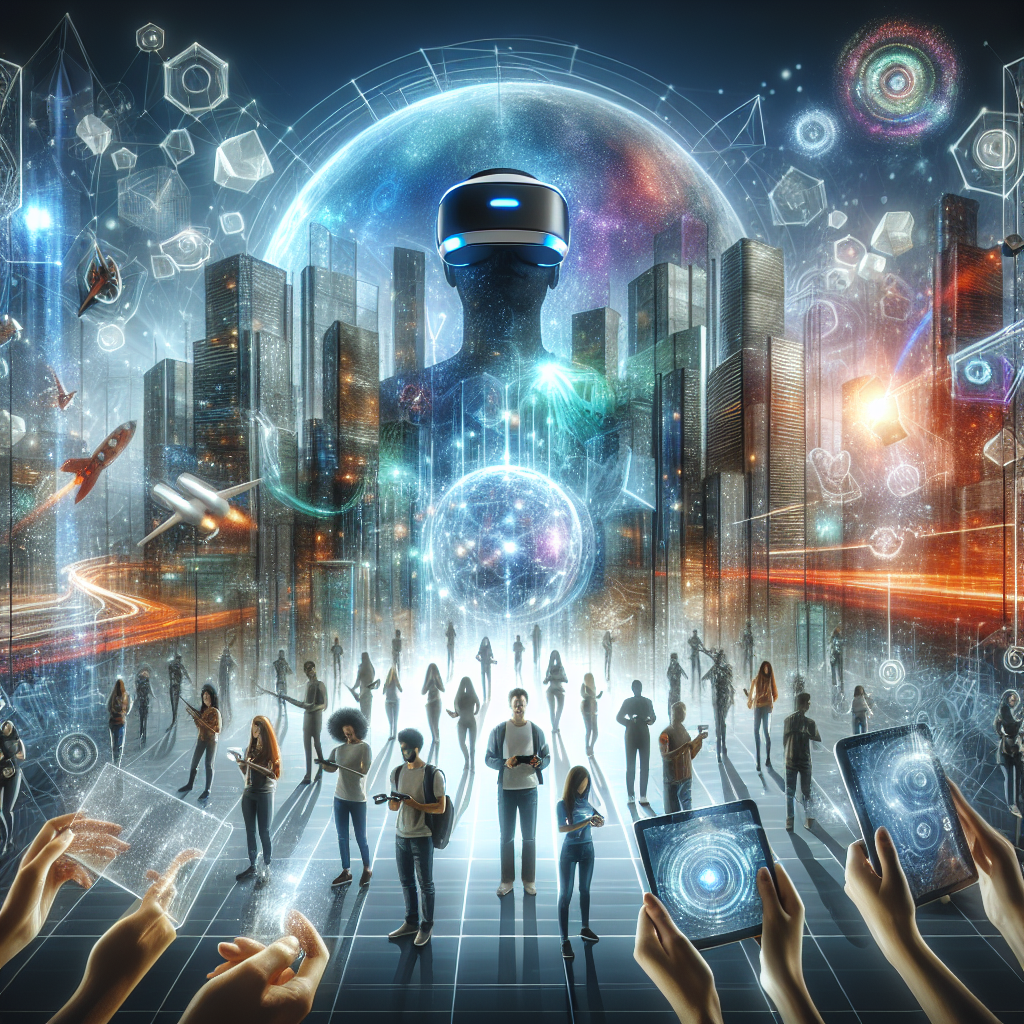Extended Reality (XR) is revolutionizing the way we interact with the world, blurring the lines between the physical and digital realms. From Virtual Reality (VR) to Augmented Reality (AR) and Mixed Reality (MR), XR technologies are unleashing a wave of innovation that promises to transform industries, enhance human experiences, and reshape our understanding of reality itself. In this article, we will explore the boundless possibilities of extended reality, providing a comprehensive analysis of its potential impact on society, business, and individual lives.
Unleashing Creativity and Innovation
One of the most exciting aspects of extended reality is its capacity to unlock new levels of creativity and innovation. By immersing users in computer-generated environments, VR allows artists, designers, and creators to explore new frontiers of expression. For instance, VR art installations are redefining the boundaries of traditional art, offering immersive experiences that engage all the senses. Similarly, architects and urban planners are leveraging VR to design and visualize spaces in ways that were previously unimaginable, leading to more efficient and sustainable urban development.
Augmented reality, on the other hand, is revolutionizing the way we interact with the physical world. From interactive museum exhibits to AR-enhanced navigation systems, this technology overlays digital information onto our real-world environment, enriching our understanding and experience of the world around us. The potential for AR to enhance education is particularly promising, as it offers the possibility of bringing abstract concepts to life and making learning more engaging and interactive.
Transforming Industries and Businesses
In addition to its impact on creative fields, extended reality is poised to transform a wide range of industries. In healthcare, for example, VR is being used to train medical professionals, simulate surgeries, and treat phobias and PTSD. The potential for XR to revolutionize mental health care is particularly striking, as it offers immersive therapeutic experiences that can help individuals confront and overcome their fears and traumas in a controlled environment.
Furthermore, XR is reshaping the way we shop and consume media. From virtual try-on experiences in fashion retail to immersive storytelling in journalism and entertainment, XR technologies are creating entirely new forms of engagement and consumption. As these technologies become more accessible and affordable, businesses will need to adapt and innovate in order to stay competitive in this rapidly evolving landscape.
Challenges and Opportunities
Of course, the rise of extended reality also presents a range of challenges and opportunities. Privacy concerns, ethical implications, and potential for addiction are just a few of the pressing issues that need to be addressed as these technologies become more integrated into our daily lives. Moreover, the potential for XR to exacerbate existing inequalities and create new forms of digital divide must be carefully considered as we navigate this new frontier.
At the same time, the opportunities for collaboration, communication, and creativity are unprecedented. As XR becomes more seamless and interconnected with our daily lives, the potential for enhancing human experiences and building new forms of community and connection is immense. By leveraging these technologies responsibly and ethically, we have the opportunity to shape a future in which XR enriches our lives in profound and meaningful ways.
Conclusion
In conclusion, the future of extended reality is filled with boundless possibilities. From unleashing creativity and innovation to transforming industries and businesses, XR technologies have the potential to reshape our understanding of reality and enhance human experiences in ways we are only beginning to explore. As we navigate this transformative landscape, it is crucial to approach the challenges and opportunities of XR with thoughtfulness, responsibility, and a commitment to ensuring that these technologies serve as tools for positive change. By staying informed, engaged, and proactive in shaping the future of extended reality, we can harness its potential to build a world that is more connected, creative, and immersive than ever before.










